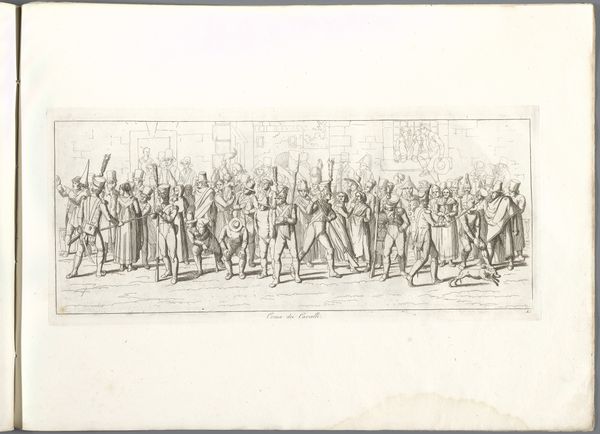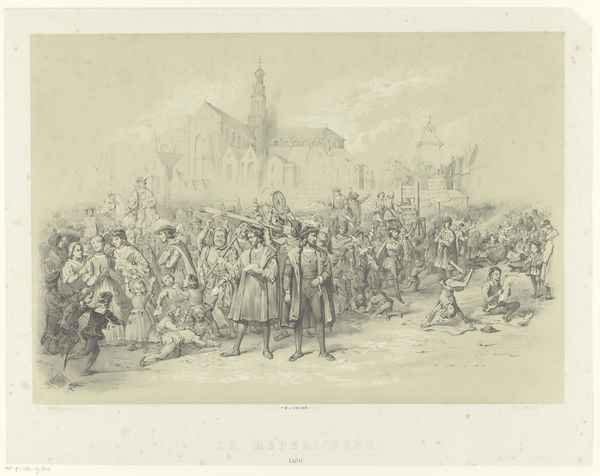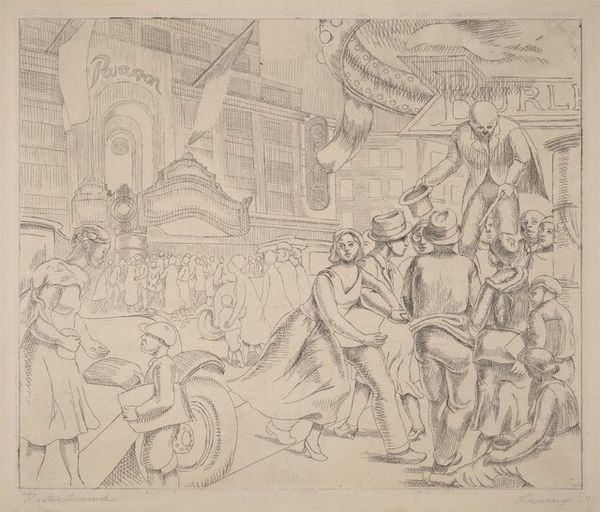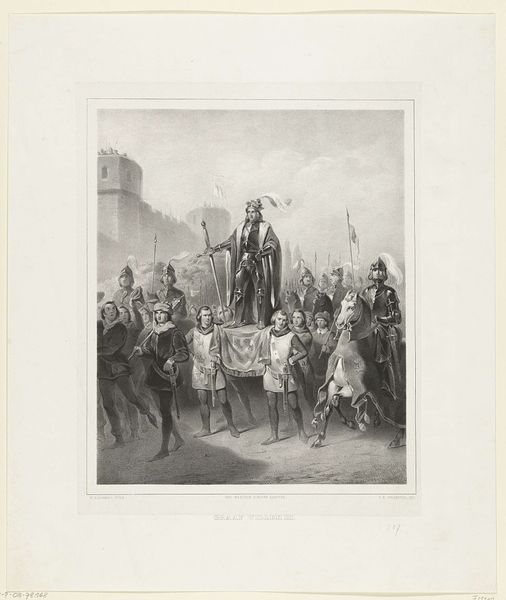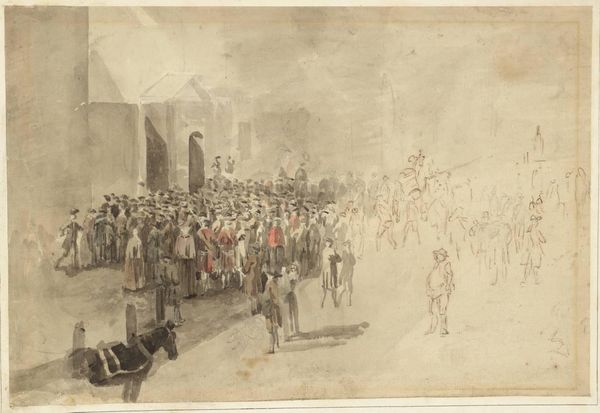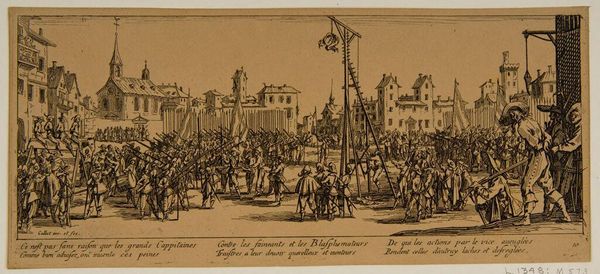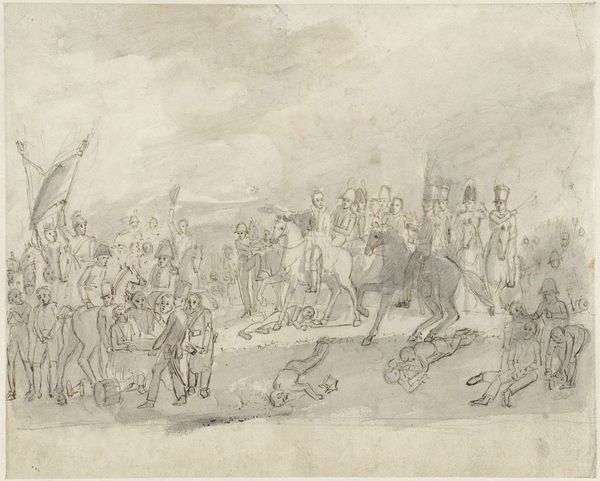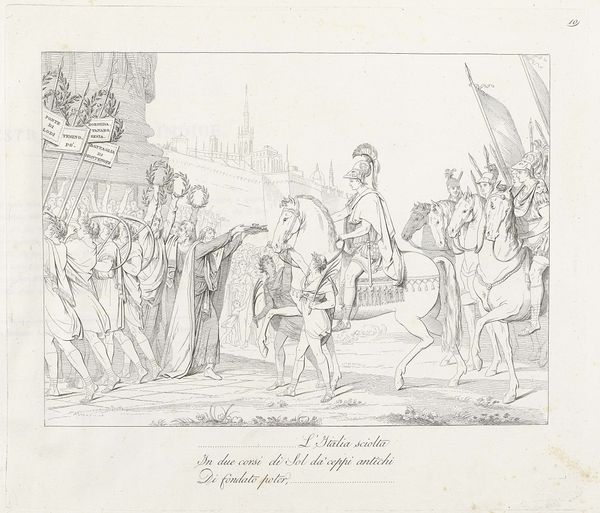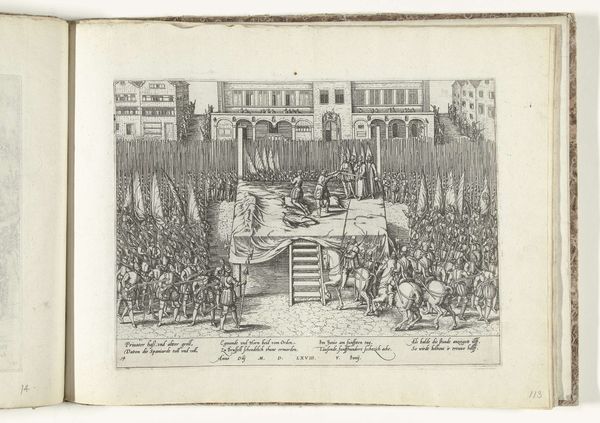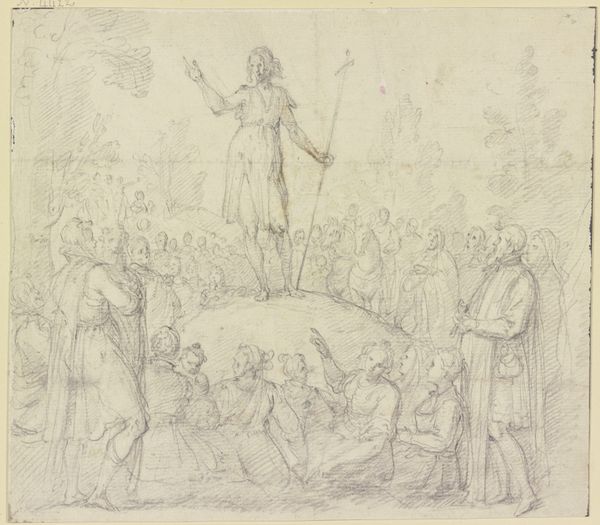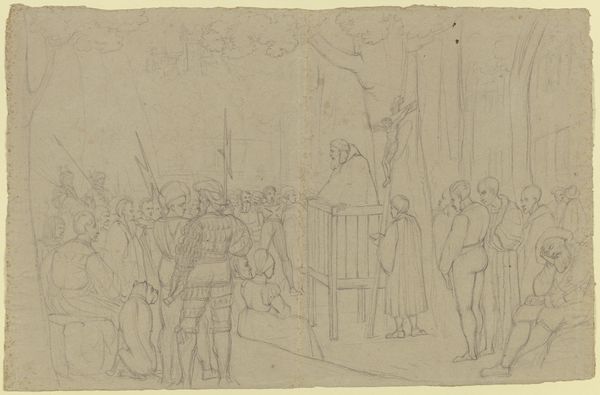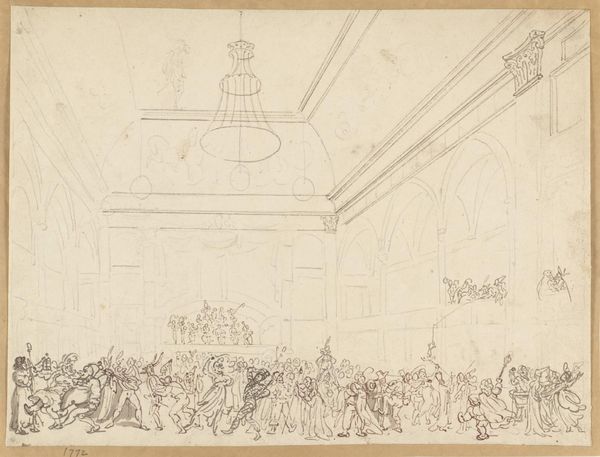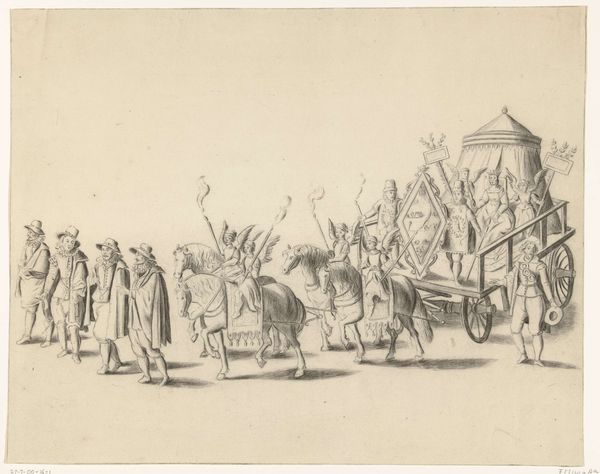
drawing, pencil
#
drawing
#
medieval
#
figuration
#
pencil
#
line
#
genre-painting
Dimensions: height 408 mm, width 511 mm
Copyright: Rijks Museum: Open Domain
Editor: This is "Middeleeuwse processie," or "Medieval Procession," by Antoon Derkinderen, likely created sometime between 1869 and 1925, using pencil on paper. It's striking how delicate and tentative the lines are, almost ghostly. It feels like a memory. What can you tell me about it? Curator: Well, seeing a late 19th or early 20th century artist looking back to the medieval period tells me a lot. The Romantic movement rediscovered and, arguably, reinvented the Middle Ages. How do you see the influence of that interest playing out here? Editor: I suppose the choice of subject matter is pretty obvious, but the linework and sketch-like quality almost feels…nostalgic, or like he's trying to conjure something half-remembered. Was this fascination with the past common at the time? Curator: Absolutely. Consider the political landscape – the rise of nationalism and a yearning for a sense of collective identity. The medieval period, often romanticized, served as a source of national myths and cultural origins. Artists like Derkinderen tapped into that sentiment. Does the implied setting – what we can glimpse of the architecture – reinforce that for you? Editor: It does. I see hints of gothic architecture in the background. It gives the procession a sense of place and history. So it’s not just about religion, but also about constructing a shared past? Curator: Precisely! And note how the use of pencil itself speaks to the unfinished nature of memory, open to interpretation and re-imagining. It's less about historical accuracy and more about the *idea* of the medieval. What do you make of the choice to leave it as a drawing and not a finished painting? Editor: I think the sketch-like quality enhances the idea of looking back. It feels like a reconstruction, pieced together rather than a concrete historical event. It also removes any potential religious bias by remaining incomplete, or, as you pointed out, unfinished. Curator: Exactly! It prompts us to consider not only what’s depicted, but also *why* this particular version of the medieval past was being constructed when it was. Fascinating, isn't it? Editor: Definitely! It's made me rethink how history can be used – and perhaps even manipulated – through art. Thank you.
Comments
No comments
Be the first to comment and join the conversation on the ultimate creative platform.
